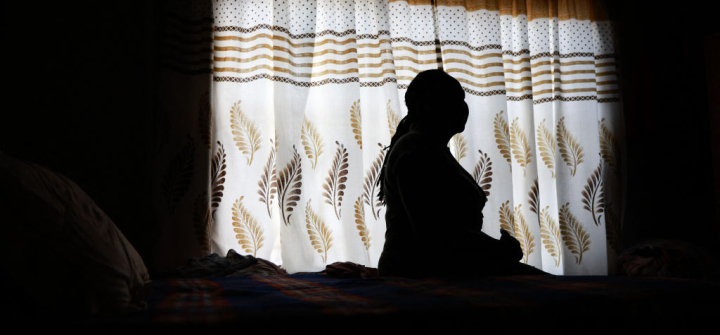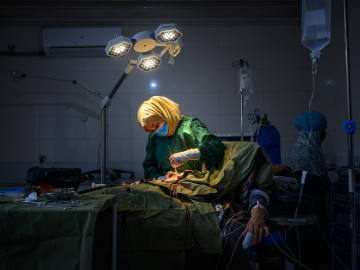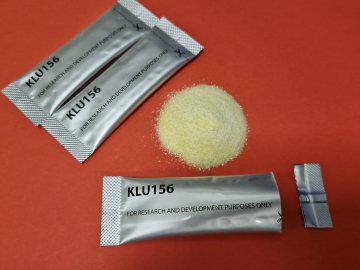U.S. Funding Cuts Stop Crucial HIV Research Work in Its Tracks
JOHANNESBURG—All the groundwork had been laid and the official approvals for a Phase 1 clinical trial were secured. But now, vials of a valuable medicine sit untouched in laboratory refrigerators.
U.S. government research funding cuts halted the seminal mRNA HIV vaccine study, part of the BRILLIANT consortium, mere days before its planned start in March 2025.
Such a vaccine could fundamentally change the HIV burden for South Africa, which reports the world’s highest number of people living with HIV.
“It feels, in many ways, like the world has come to an end, to put it mildly,” says Linda-Gail Bekker, the trial’s lead and director of the Desmond Tutu HIV Centre. “But obviously one has to get through that and find a way to get to the other side.”
The U.S. administration’s executive order to cut all aid funding to the country, along with cuts to other programs, have disrupted prevention and care—and will likely lead to thousands of deaths. Clinics that used to cater to vulnerable populations now sit empty, with hundreds of staff let go.
But, as the world’s third largest contributor to HIV research, South Africa is facing a unique double-whammy. The number of research trials, participants, and staff affected is currently tricky to quantify and keeps changing. “We can say that it is a devastating domino effect that goes on daily with repercussions far beyond what we imagined, says Thesla Palanee-Phillips, the director of Clinical Trials at Johannesburg’s Wits RHI research institute.
Palanee-Phillips and other researchers have had “lots of tears and lots of sleepless nights” as their work hangs in the balance. She was the deputy director of MATRIX, a research agreement across 19 partner organizations in multiple African countries and the U.S. that launched in 2021 with $125 million from USAID for what was initially a five-year effort.
MATRIX worked on the research and development of HIV prevention products like vaginal films and injections for women, with a particular focus on their effective use and acceptance by patients. “There’s limited-to-no chance of ever resurrecting [the project] because they’ve let go of all the partners at USAID that we’ve worked with,” Palanee-Phillips says.
Just six months ago, there was optimism around controlling the HIV epidemic, Bekker says. “We were really in a position where we could maybe tame the tiger and put it back in its cage,” she says.
Now, with many trial results becoming unusable and the promise of their innovations hanging in the balance, she says it feels like the cage’s doors have been opened wide and the key thrown away.
The U.S. cuts are particularly devastating because South Africa contributes strongly to globally used HIV innovations, like the long-acting prevention injectable lenacapavir and HIV cure research. They also tear apart the research infrastructure and long-established relationships with funders that Bekker describes as a well-oiled ecosystem. “People need to understand the incredible loss of future dividends from the investment that has already been made,” she says. “And—to be entirely transactional—this just does not make good business.”
As Ntobeko Ntusi, president and CEO of the South African Medical Research Council (SAMRC) puts it, “Research appears to be an innocent bystander in what is a big political standoff.”
Given the current uncertainty, HIV researchers are trying to find funding and to become less reliant on a single source.
Ntusi says they are already in discussions with the South African government and have had initial promising engagements with philanthropic organizations and individuals—including several that approached the SAMRC. Public-private partnerships and large pharmaceutical companies may also offer some hope.
Bekker has been able to move some of the researchers in her organization to other work to shield them from layoffs. She is hesitant to turn to the government for research funding when clinical life-saving treatment is in such great need and is the top priority. “It’s possible that we on the ground have to also think about how we’ve been doing business,” says Bekker, adding that they might need to explore whether some of the research could run parallel to clinical efforts.
Until future funding becomes clearer, many participants have been shut out of clinical trials, and researchers worry about what might happen next.
“It takes us decades to build momentum and be a recognized scientist,” Palanee-Phillips says, “and overnight decisions are being made to just destroy careers and the work that we’ve done.”
Despite the damage done, she says, with tentative hope, that resilient African researchers can make steps towards recovery.
Ed. Note: This article was produced in collaboration with Hopkins Bloomberg Public Health magazine and is part of a series that examines front-line impacts of cuts in U.S. funding.
Join the 50,000+ subscribers in 170+ countries who rely on Global Health NOW summaries and exclusive articles for the latest public health news. Sign up for our free weekday newsletter, and please share the link with friends and colleagues.
A 45 year-old aid worker who used to work with children in South Africa orphaned by the AIDS virus poses for a photograph at her home in Msogwaba township, near the South African city of Mbombela. March 13. Phill Magakoe / AFP via Getty




